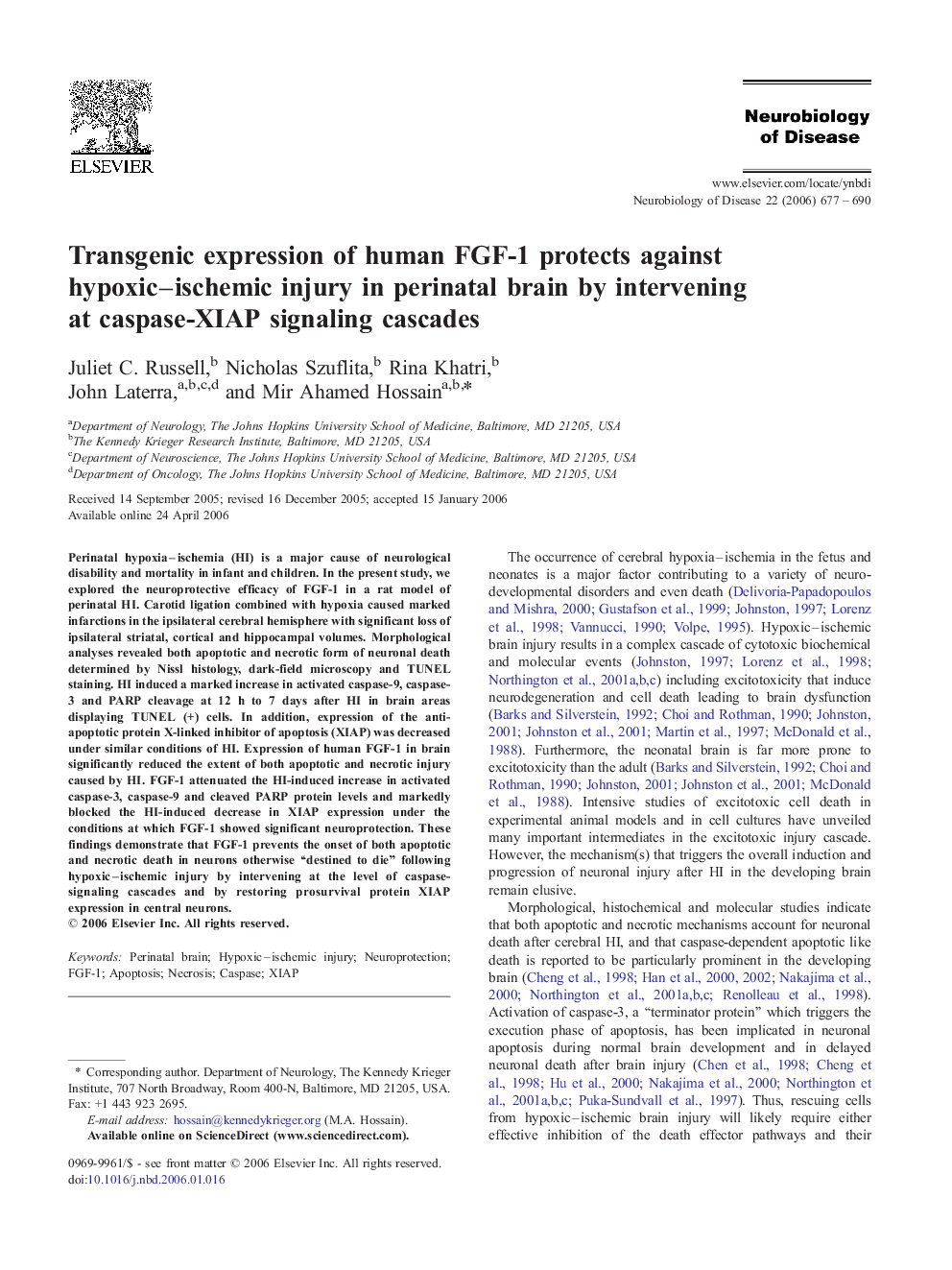| Article ID | Journal | Published Year | Pages | File Type |
|---|---|---|---|---|
| 3070838 | Neurobiology of Disease | 2006 | 14 Pages |
Perinatal hypoxia–ischemia (HI) is a major cause of neurological disability and mortality in infant and children. In the present study, we explored the neuroprotective efficacy of FGF-1 in a rat model of perinatal HI. Carotid ligation combined with hypoxia caused marked infarctions in the ipsilateral cerebral hemisphere with significant loss of ipsilateral striatal, cortical and hippocampal volumes. Morphological analyses revealed both apoptotic and necrotic form of neuronal death determined by Nissl histology, dark-field microscopy and TUNEL staining. HI induced a marked increase in activated caspase-9, caspase-3 and PARP cleavage at 12 h to 7 days after HI in brain areas displaying TUNEL (+) cells. In addition, expression of the anti-apoptotic protein X-linked inhibitor of apoptosis (XIAP) was decreased under similar conditions of HI. Expression of human FGF-1 in brain significantly reduced the extent of both apoptotic and necrotic injury caused by HI. FGF-1 attenuated the HI-induced increase in activated caspase-3, caspase-9 and cleaved PARP protein levels and markedly blocked the HI-induced decrease in XIAP expression under the conditions at which FGF-1 showed significant neuroprotection. These findings demonstrate that FGF-1 prevents the onset of both apoptotic and necrotic death in neurons otherwise “destined to die” following hypoxic–ischemic injury by intervening at the level of caspase-signaling cascades and by restoring prosurvival protein XIAP expression in central neurons.
